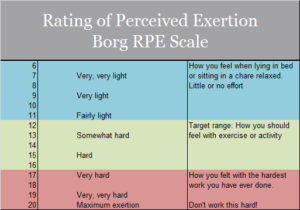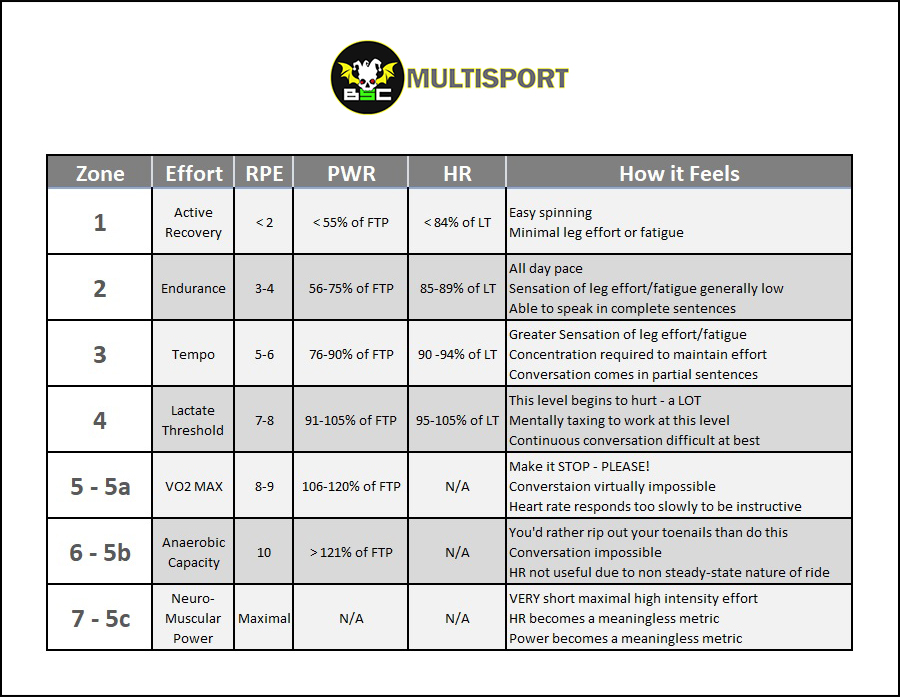 Most of you have likely heard of RPE – Rate of Perceived Exertion – at some point. Many of you may have even done some training or racing using it. But in this day where power meters, heart rate monitors, GPS watches and data analysis software are the norm; is there any room for a subjective measurement like RPE?
Most of you have likely heard of RPE – Rate of Perceived Exertion – at some point. Many of you may have even done some training or racing using it. But in this day where power meters, heart rate monitors, GPS watches and data analysis software are the norm; is there any room for a subjective measurement like RPE?
I believe that RPE is more important now than it’s ever been.
In a sport that is becoming increasingly dominated and reliant upon technology, athletes – triathletes, cyclists, and runners – are losing the “feel” that separates the good from the great. The best and most successful athletes know at any given moment precisely how hard they are working. It doesn’t matter if they are at an easy endurance pace or an all-out VO2 MAX effort. They KNOW – without technology. That knowing is the key to performing and excellence.
What is RPE?
RPE is a subjective measurement of how hard you are working during exercise – swimming, cycling, or running.
I remember using a simple 1-10 scale during my swimming career to gauge  how hard we were swimming during workouts. A few years later while I was in college, I was formally introduced to the “Borg Scale of Perceived Exertion” (shown at right). Of course, my first thought was it was ridiculous. I mean really, who thinks of a scale of numbers going from 6-20?
how hard we were swimming during workouts. A few years later while I was in college, I was formally introduced to the “Borg Scale of Perceived Exertion” (shown at right). Of course, my first thought was it was ridiculous. I mean really, who thinks of a scale of numbers going from 6-20?
Over the years, the RPE scale has been modified into a 1-10 scale from Very Easy, to Maximal Exertion.
Why Use RPE?
Last weekend the USAT National Age-group Championships took place. Just two days before she was leaving to compete, one of our athlete’s sent me a text – “Hey coach, my power meter is no longer providing data. I’ve contacted the vendor, they’ve diagnosed it and are going to overnight replacement parts, but they don’t know for certain it will fix the problem. Looks like I will be competing at Nationals without my power meter.”
That pretty well highlights one reason you should use RPE. Technology fails; batteries die. If your only method of accurate pacing is using your technology, and that technology fails for whatever reason, you will suddenly “be blind” and unable to accurately pace your event.
Perhaps more importantly however, a device such as a power meter is telling you what your power output is – 150 watts is 150 watts. It doesn’t matter if you are going uphill, downhill, battling a headwind, or riding on a flat surface. What it doesn’t provide you is a snapshot of what else might be taking place that effects performance – heat, humidity, fatigue, etc.
For example, if you are chasing a power target of 150-watts, which you may have done repeatedly in training on a 75-degree day; then on race day you’re still chasing that 150-watt target, but the temperature is 95 degrees, you will quickly find yourself over-extended – even though you were riding at your target power.
There are lots of reasons why an objective measurement can differ from your RPE –
- Fatigue from previous workouts
- Poor sleep the night before
- Dehydration
- Excessive stress
- Temperature/humidity
This is where RPE becomes helpful. As you become more experienced using RPE, your RPE-O-Meter will factor in everything that impacts your exertion level and you will know precisely how hard you are working. Knowing is the key to performing and excellence.
Simply stated, using RPE allows you to customize each and every exercise session – training or racing – to make sure you’re getting the most out of what your body can give you at that moment.
Here at BSC, we train our athletes to create power and/or HR redlines. They then pace their races by RPE and use the redlines to keep from exceeding their physical capabilities. By using RPE as your primary pacing tool, you become “dialed-in” to what your body is doing; what it feels like to exercise at any given level of exertion. Because our athlete whose power-meter died two-days before Nationals was so accustomed to using RPE, she was able to go to Nationals without a functioning power-meter and have what was one of the best races of her triathlon career.
Here is a chart showing the general relationship of RPE, Power, and Heart Rate.

There’s no question that using power and heart rate can take your training to the next level. Adding RPE to your array of available tools can take your racing to the next level. Having the ability to adjust your intensity based upon how your feel will allow you to pursue excellence as never before.
